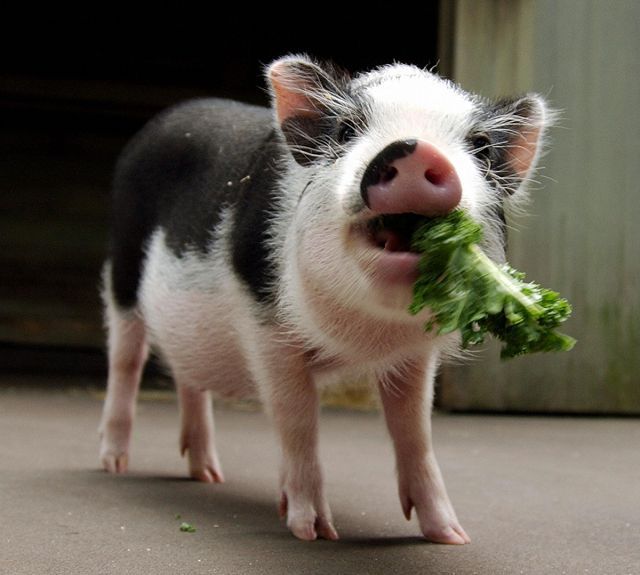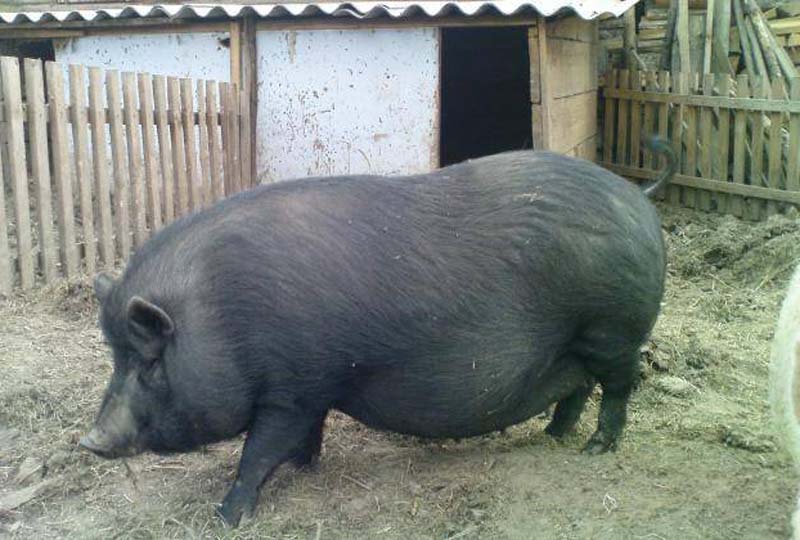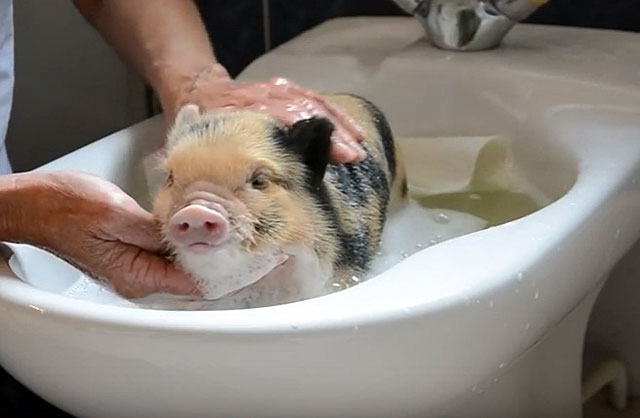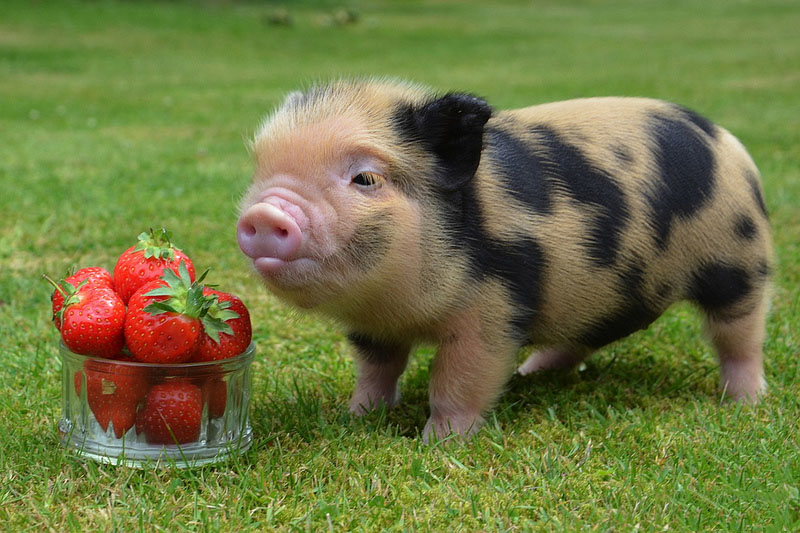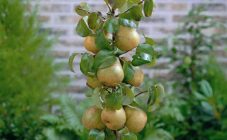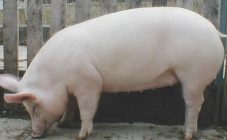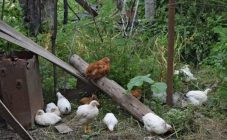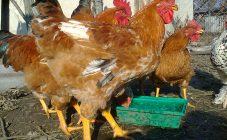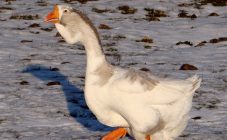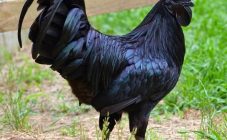Content:
Little pigs have become very popular, the owners of which walk their pets on a leash in parks. For many owners, caring for such an exotic animal is much easier than caring for a dog or cat. And this should not be surprising: pigs have a very developed intellect, they have a high level of cleanliness, and their character is friendly and cheerful. It is easier to train a pet small pig than a dog. An ornamental pig is able to become attached to its owner in a short time.
General information about the animal
For the first time, the dwarf breed was bred as a result of experiments carried out by German breeders. They decided to turn an ordinary pig into an animal that can be kept at home. In the first half of the 50s, breeding work began, but it was not immediately possible to get the first copy. Scientists decided to cross the Vietnamese dwarf pot bellied pig and a small wild boar, which led to the desired result.
The first breed to be bred is the Bergstrasser Knirt, often referred to as the toddler. An adult dwarf domestic pig reaches large size, and its weight can be no more than 12 kg. The results of the second breeding work were also successful, as the result was the Wiesenau breed. Active growth in representatives of this breed lasts for 1.5 years. To date, breeders in the United States of America and Germany are conducting research to breed even more miniature pigs.
Characteristics and features of the breed
The dwarf pig is commonly referred to as a mini-pig, which is a common name for over 30 breeds. They do not have clear standards, and the mass of an adult representative ranges from 10 to 100 kg. Some are surprised by this fact, since the weight of the largest pig of another breed reaches a ton.
A litter of one sow can consist of 5 to 20 piglets, and the process of puberty begins six months after they are born. Dwarf pigs are popular not only abroad, but also in many cities of Russia. It is for this reason that Russian scientists are working to breed even smaller pigs - micro-pigs.
The intensive growth of a decorative pig lasts for two years, and the mass of a mini pig depends on what breed it is. A medium sized pig can weigh no more than 50 kg, and a large piggy pig weighs 130 kg. Representatives of large pigs include the following breeds:
- Siberian miniature;
- Göttingen;
- Vietnamese pot-bellied.
Varieties of small pigs are great for keeping them at home. Their mass varies from 10 to 40 kg, and the most popular are the bergstrasser knirt and mayalino, which weigh 10 and 15 kg, respectively.
As for the color of mini pigs, it is very diverse, and can be pink, red, sand, black, brindle, marble and even mixed. The body is small in size, covered with thick, stiff bristles.Pigs are distinguished by short legs, straight tail and a small proportional head.
Mini-pigs are very good-natured, mischievous and affectionate animals, they love to frolic and play, and they also have a cheerful disposition and a high level of curiosity. Pigs are very attached to their owners, they love to spend time in their hands. Given the fact that pigs do not like to be alone for a long time, it is necessary to have another pet at home - a dog is an ideal option.
Features of breeding dwarf pigs
Even for an inexperienced owner, maintaining and caring for a miniature pig will not seem like something overwhelming, and with the help of daily communication, you can only strengthen friendship with a decorative piggy pig. Animal care includes several mandatory points, namely:
- Regular bathing in the bath or shower. In the summer, you can bathe them in a small bath in the yard, in the warm water the pig will splash on its own.
- Provide the piglets with sufficient sunlight and walking every day so that they can eat fresh grass. Dandelions and fresh nettles help strengthen the immune system.
- Protect gilts from drafts and low temperatures, as animals are thermophilic. For walks in the fall and spring, it is necessary to put on special warm clothes on the pigs, and in the winter season it is not recommended to walk them.
Obtaining a detailed veterinary card is possible only from a veterinarian, this is necessary in order to prevent serious diseases that can occur when raising a pig. For small pigs, a mandatory procedure is provided - castration. If this is not done, it will not work to avoid a strong unpleasant odor in the house. No more than once every 6 months, the pigs need to clean their ears and trim their hooves.
The cleanliness of dwarf pigs is at the genetic level, due to which it is possible to accustom them to the tray without any difficulties. But it is worth noting that the pot should be placed only in the place that the pet has chosen for itself. You can fill the tray with finely chopped paper or sawdust, but not with ready-made cat litter for the toilet, since the dwarf pig will not be able to distinguish it from food.
As for the nutrition of a mini pig, it is recommended to feed it at least 4 times a day, and an adult pig - no more than 2 times (in the morning and evening). It is imperative to follow the regimen and feed regularly. The diet includes boiled and fresh vegetables, buttermilk and low-fat cottage cheese and fresh fruits (except citrus fruits). Piggies can also be fed beef fillets, veal and sea fish.
Mini-pigs periodically need to be given vitamin and mineral complex preparations, but this should be done only after prior consultation with a veterinarian, who will prescribe a course appointment. Fish oil and bone meal are great supplements. You can make a menu from the following vegetables:
- pumpkins;
- beets;
- carrots and Jerusalem artichoke.
All of the above products are recommended to be added to the porridge and mixed thoroughly.
Breed advantages and disadvantages
Before adopting a mini-pig, potential owners should study all the advantages and disadvantages of these adorable animals. The benefits of a pygmy pig include:
- easy pet training;
- devotion;
- unpretentiousness.
The significant disadvantages of indoor pigs include the fact that pets are potential destroyers. If the pig gets bored, it can damage the flooring, overturn the rubbish bin, and ruin the garden area.
Before you start a domestic pig in an apartment, you must carefully weigh all the pros and cons of a potential pet. Only under such conditions is it possible to make the right decision.
